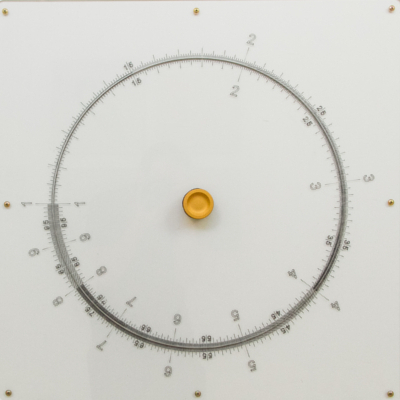SLIDE RULE
Before the advent of electronic calculators, especially scientific ones, the slide rule was the only resource used by scientists and engineers in their daily calculations.
Invented by the English priest William Oughtred (1574-1660), this instrument had its improvement linked to several names: Richard Delamain (student of Oughtred) presents the circular slide rule (1630), R. Bissake presents the slide rule with sliding tongue (1654), J. Watt perfects the graduations of the scales (1779), Amedee Mannheim (French officer) introduces a movable cursor connecting the scales (1850), for example.
The main function of the slide rule is to perform multiplication operations, supported by the property , transforming a product into an addition, on the logarithmic scale.

